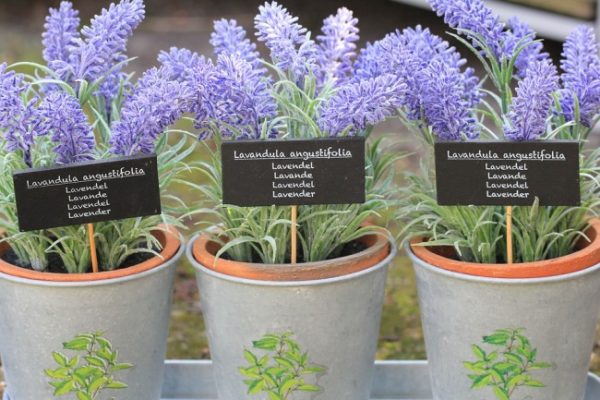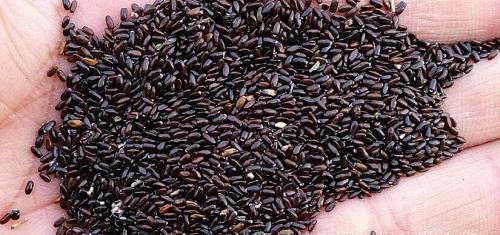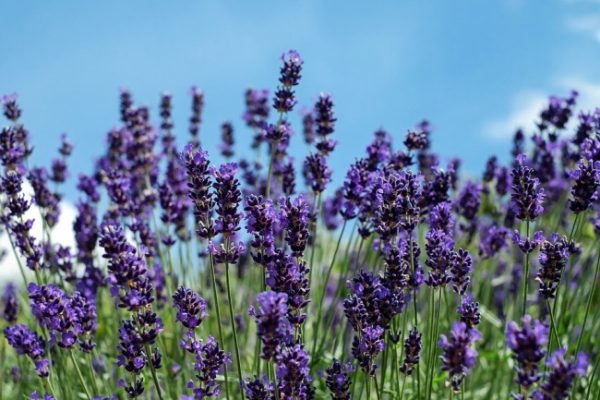Lavender Farming:
The following discussion is all about Lavender farming.
Lavender Farming
The lavender crop is grown in low rainfall areas and on the slopes of hills all over Asia.
Botanical Name of Lavender
Lavendula sp.
Family of Lavender
Labiaceae.
Description
Lavender is an aromatic herbal plant with 50 to 80 cm height. The leaves of lavender are opposite, oblong-linear or lanceolate with lavender color small flowers borne in terminal spikes. Levander plants can be grown in pots, containers, and backyards as well.

Origin of Lavender
- Mediterranean region.
Uses of Lavender Plant
- The lavender species can be exploited in many ways. It has many medical properties, its dried inflorescence is considered an antispasmodic, a carminative, a diuretic, a stimulate and used as a tonic. It also used a traditional medicine to cure abdominal pains and headaches. It is an important ingredient in the herbal bath for a long time.
- The Lavender oil has antiseptic, carminative and spasmolytic properties. Lavender flowers are used insect repellant.
- Lavender oil is the main ingredient in cologne toilet waters, lotions and many high range perfumes and cosmetics. Spike lavender oil scents cheap soaps, polishes, detergents and liquid hand cleaner. French lavender oil is used in room sprays, deodorants, disinfectors, and insecticides. Soap industry is the major consumer of lavender oil, and it is mostly used in men’s colognes and many expensive perfumes, detergents, cleaning and washing soaps, polishes, face powders and hair cosmetics.
Varieties of Lavender
English Lavender (Lavandula Angustifolia):
- This variety lavender is most famous and familiar types of lavender. It is native of the Mediterranean region, it can be found as high as 1700m above the sea level. These lavender flowers are 0.20 to 0.40 cm long and are single stalked. Leaves are in greyish green color and 30 to 50 mm long. The essential oil contents are 0.5 to 0.1%.6
Spike Lavender(L.latifolia) :
- This lavender variety is originally from Mediterranean region. This lavender grows at 200 to 700 m above the sea level.
Lavandin (L.Intermedia(Syn.L.Hybrida):
- It is a hybrid of true lavender and spike lavender. It is mainly found at height of 700 to 1000 m above the sea level. This shrub grows to the height of 0.8 to 0.1 meters and in the natural condition, it has a hemispherical shape. The spike of this lavender grown to 0.6 to 0.9 meters and generally it is branched. The leaves are linear or thin, lanceolate, opposite and bright green in color without pubescent. The essential oil content is 0.9 to 3.0 %.
Lavender Oil Contains:
- Terpeiene-4-ol = 2.3%.
- Alpha-Pinene = 0.2%.
- Cumene= 1.02%.
- Camphene = 0.42%.
- Beta-pinene= 1.29%.
- Limonene = 11.0%.
- 1,8-cineole= 1.82%.
- Myrcene = 0.47%.
- P-Cymene = 0.27%.
- Limonene oxide = 0.57%.
- Citronellal acetate = 0.45%.
- Lavendulyl acetate = 0.13%.
- Farnesene = 0.07%.
Soil for Lavender Farming
Soils which are rich in nutrients and light well-aerated are best for the cultivation of lavender flowers. Soils which are low carbonated and sandy are also suitable for lavender cultivation, but these soils need minerals and fertilizer supplements regularly. Waterlogged soils are not suitable for its cultivation. Lavender grows well in slope and hill areas. Neutral and alkaline soils are best for lavender plantation, best oil yields are obtained.
Agro-Climate for Lavender Farming
Lavender is a temperate plant, Lavender grows well in cold winter and cool summer. These plants resistant to frost and drought. This crop gives best yields in altitude areas, this crop needs a great deal of sunshine. Lavender plant grows well with good sunshine, the formation of flowers, the essential oil content of the flowers, and the ester content of the essential oil will be increased.
Slope lands in dry areas which are not cultivated are also used for growing lavender crop giving the farmer a good source of income.
Propagation in Lavender Farming
Lavender is propagated through seeds as well as through rooted cuttings. Propagations through seeds are less expensive and faster process. But cross-pollination can cause genetic variability and quality of oil cannot be maintained.
Vegetative propagation can maintain the quality of initial strain that results in even and standardized population. However, this method is slower and expensive with a lower propagation coefficient.
Seed Propagation in Lavender Farming

Seeds are sown in beds, 1m wide, in autumn(November-December) using broadcasting or in a row 10-12 cm apart for raising nursery. As seeds of lavender are very small, they can be mixed with fine sand or wood ash before sowing.
- Approximately 1 sq.m area, 2.0 to 2.5 grams of seeds are required.
- Sowing depth of seeds is 1-2 cm.
- After sowing seeds are covered with fine sand and are left in this stage during winter.
- In spring seeds germinate at 14 to 15 degrees.
- The bed should be kept moist by sprinkling water regularly.
- The seedling should be pruned periodically avoid follicle formation.
Propagation by Cuttings in Lavender Farming
Lavender plants are propagated by cuttings. The cutting is obtained from young wood or small branches and is inserted into raised beds with sandy soil. The bed should be protected completely in the winter season. In summer a certain quantity of water is required till the cuttings are formed.
In cold weather, the beds are covered with black polythene covers. And these covers are kept moist by sprinkling water regularly. Holes are made of the polyethylene covers at 7.5 cm x 7.5 cm apart. A 10cm length of cuttings is taken from one-year-old plants and carefully planted in the holes. Using black polythene cover for protecting plants and cutting give a better rooting and prevent the growth of weeds.
Planting in Lavender Farming
Lavender transplantation is done in either autumn or in spring.
Plating details:
- Lavender plants are planted at 1.20 to 1.40 m is between rows and 30-40cm inside the rows.
- About 20,000 plants per ha give the highest yield.
- Earthing up of soil around the seedlings is considered good for the rooting.
Intercultural Operations in Lavender Farming
Regular weeding and hoeing is the best way to keep lavender weed free. Hoeing regular makes soil loose which promotes proper plant development. During the first and second year, 5 to 6 cultivations at 8 to 10 cm depth are required. Subsequently, every year lavender plantations should be machine cultivated 3 to 4 times. And digging once before blossoming in the spring is recommended.
Manuring and Fertilization in Lavender Farming
In general, 100 kg N, 40 kg each of P2 O and K2 O per hectare is recommended of which 20 kg N and the entire P2O5 and K20 are applied as basal dose. And the balance 80 kg of N is applied in four split doses during each year.
Harvesting in Lavender Farming

Lavender plant starts flowering first in warmer and low altitude areas and later at high slopes. Flowers are cut off with stem lengths not greater than 12 cm because of the absence of oil in the stems and leaves.
Production of high-quality lavender oil depends on many factors such as the degree of blossoming, picking during suitable hours of the day, atmospheric conditions, the method of harvesting, storage, flower transportation etc. Lavender plant harvesting starts when the plant has 50% blossoming and done till the blooming is finished. Harvesting should be done in warm climate mainly in dry and sunny days. Cold weather prevents the development of the esters and rain is fatal for harvesting. In harvesting, it is important to cut the flower axis completely at a uniform height because the remaining flowers on shrub would affect flowering the next year. The lavender flower should be cut with well-sharpened sickles.
Yield in Lavender Farming
The yield of the crop depends upon several factors like soil quality, weather conditions under which the plants are cultivated. Many studies have proved that the oil content range was from 1.2% to 1.5% while the yield was 15 kg per ha is obtained.
Bottom Line of Lavender Farming
- Anybody can grow lavender? Not everyone can grow lavender as it requires right climate similar climate to the Mediterranean.
- When it comes to economic or profits or income from lavender farming business, few dozens of lavender in your backyard or smaller spaces fetch you hundreds of dollars under optimal growing conditions. If you grow lavender in acres on large scale, you expect millions of dollars.

dear sir
your details of all plants are excellent.It helps to everyone to enter in agriculture with knowledge of plants they selec to cultivate it.
your service with no cost,it may be lightening in many families in the world.
Thanking you
with rgards
A Murugesan
Thank you for your comment. you can also check our top site: Agri Farming.
Your article is good. Please give the name of the nurseries for buying real lavender plant and the price
I need lavender plants. Please tell me from where to buy I need 10 lavender plants